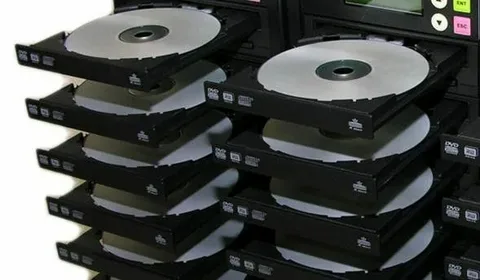The global duplication disc market is projected to expand from USD 2.5 billion in 2025 to USD 4.6 billion by 2035, at a healthy CAGR of 6.4% during the forecast period.
In an era defined by cloud storage, streaming platforms, and real-time file sharing, the duplication disc market may seem like a remnant of the past. But beneath the surface of rapid digitization lies a continued, niche-but-critical demand for physical media. From corporate archiving to indie music distribution and secure data transfers, duplicated discs continue to serve as reliable, tangible assets in an increasingly intangible digital landscape.
What once fueled mass-market entertainment has now evolved into a specialist industry rooted in permanence, security, and compatibility. The duplication disc market may not dominate tech headlines, but its relevance endures—quietly adapting to serve new needs with precision and dependability.
Get Ahead with Our Report: Request Your Sample Now!
https://www.futuremarketinsights.com/reports/sample/rep-gb-1229
Beyond Distribution: A Medium for Permanence and Control
While digital files can be deleted, altered, or lost to a corrupted drive, duplicated discs offer a sense of finality. They’re not just carriers of content—they’re physical records of intellectual property, fixed in format and immune to sudden edits or connection failures.
For many industries, including education, healthcare, legal, and government, discs still provide an affordable, durable, and legally recognized format for archiving sensitive or critical information. In media production and independent publishing, discs also offer a tangible product—something to hold, gift, or sell—that retains value in a world oversaturated with invisible files.
Overshadowed by Streaming, Anchored by Utility
Streaming services, USB drives, and cloud platforms have reshaped the way content is consumed and shared. Yet, for organizations and creators who prioritize control, quality, or offline accessibility, duplicated discs remain a trusted solution.
Whether it’s a training video burned for rural distribution, a wedding video provided to clients, or a game prototype handed to investors, physical discs offer certainty. There are no file compatibility issues, login credentials, or subscription dependencies—just a direct, self-contained experience.

Real-Time Production with On-Demand Precision
Modern duplication systems have advanced far beyond early burn towers. Today’s equipment supports high-speed, high-quality duplication with automated printing, error checking, and packaging. Whether duplicating dozens or thousands of discs, these systems offer consistency and scalability.
Duplication services can be customized for content type, brand design, region compatibility, and even embedded security features like watermarking or copy protection. This flexibility allows the market to cater to boutique clients, educational institutions, and even enterprise backup strategies.
A Niche for Preservation, Privacy, and Physical Value
In an age of data breaches and disappearing links, duplicated discs offer a form of digital permanence. They cannot be hacked remotely. They don’t rely on passwords or internet access. For confidential records, air-gapped media like discs provide peace of mind that cloud storage cannot always guarantee.
Culturally, there’s also a resurgence in physical media nostalgia. From vinyl records to retro gaming discs, consumers are rediscovering the joy of physical ownership. In this context, duplicated discs are not just practical—they’re collectible, shareable, and often seen as more meaningful than a download link.
Thorough Market Evaluation: Full Report
https://www.futuremarketinsights.com/reports/duplication-disc-market
Tied to Heritage, Accessibility, and Practicality
For museums, film archives, and academic institutions, discs remain essential for preserving digital heritage. In locations with limited internet access or constrained bandwidth, they are also the most practical way to distribute large volumes of data, training materials, or multimedia content.
Even as cloud-native strategies rise, hybrid approaches that include disc duplication offer redundancy and accessibility—key principles in digital asset management and disaster recovery planning. The format may be modest, but its function is far from outdated.
The Enduring Format in a Fleeting World
While the world races toward streaming, virtualization, and cloud dependency, the duplication disc market continues to hold space for those who value certainty, clarity, and permanence. It may not drive innovation at the same pace as newer technologies, but it delivers consistency in a world where digital change is constant.
Ignore its value, and you overlook the industries and use cases still grounded in physical formats. Embrace it, and you find a market that quietly delivers reliability, security, and simplicity—disc by disc, byte by byte.
In a time of fleeting digital trends, the duplication disc stands firm as a quiet steward of content—lasting, dependable, and still turning with purpose.






